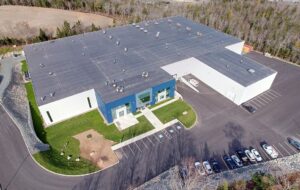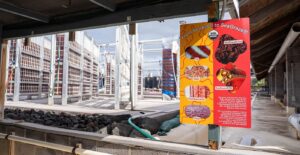Better yields, the opportunity to harvest more times a year and higher retail prices are making indoor farming more productive than conventional outdoor operations, according to a new report from data software company Agrilyst.
The State of Indoor Farming details the results of a survey of over 150 indoor growers in the US, representing around 9% of the country’s current indoor farming market.
While unable to make a 100% like-for-like comparison to outdoor operations for all types of produce, the report builds a comparison between outdoor farms and indoor operations using historical USDA and other public data.
According to the report, indoor horticulture operations stand to make $2.2 million an acre each year compared to an outdoor lettuce operation which makes $12.4k an acre and an outdoor tomato operation, which makes $13k an acre.
Indoor greens growers surveyed reported an average of 340k pounds per acre annually, compared to about 30k pounds per acre reported by the USDA for lettuce under conventional outdoor production. That’s an 11x increase in yield. The majority of this is down to the increase in the number of harvests per year; outdoor lettuce growers harvest four to fives times a year compared to the potential for indoor growers to harvest 18 times a year due to a shorter growing period under controlled conditions.
But even without this cyclicality benefit, indoor growers can produce 2.8x more annually on yield increases alone, according to the report.
There were similar productivity gains for tomato growers, according to the report.
Adding to these harvest and yield figures, the price of indoor-grown produce is also much greater than outdoor-grown produce.
According to the report, indoor greens farmers are getting 10x more, and indoor tomato growers are getting 2.5x more than their outdoor counterparts. A large reason for this is the distribution channels of these growers: direct to consumer or restaurant sales.
Likely a result of this positive trend, 86% of the indoor growers surveyed plan to expand their operations in the next five years. For all respondents, even the minimum planned expansion is 4.7x larger than their current farm size, which suggests significant market growth in the coming years.
They also want to invest in technology. On average, growers have an annual budget of $12 per square foot to invest in technology for both increasing plant yields and managing operations more efficiently. They also have an annual budget of $15 per square foot to invest in technology to improve crop quality.
Topping the list of new technologies, 39% of growers are interested in purchasing a farm management system in the next year, with 90% of all growers surveyed believing that they can increase their crop yields with data analytics. In addition, 28% of growers are interested in purchasing post-harvest automation systems, 28% are interested in purchasing LED lighting, and 27% are interested in purchasing climate control systems. The lowest priority item listed was organic nutrients.
But it is not plain-sailing for indoor agriculture. There are many challenges for the sector to overcome to be truly efficient and sustainable.
Keeping operating costs down is the biggest challenge, according to survey respondents, followed by the difficulty in predicting and stabilizing operating costs. Labor costs are one of the biggest and the report delves into the average workforce dependent on the size of the farm, and type of crop.
The report also touches on the issue of organic certification, which we covered in a post here last week.
To find out more about the make-up of the survey respondents, how exactly they plan to spend, and more in-depth analysis of the challenges they face, download the report here.




